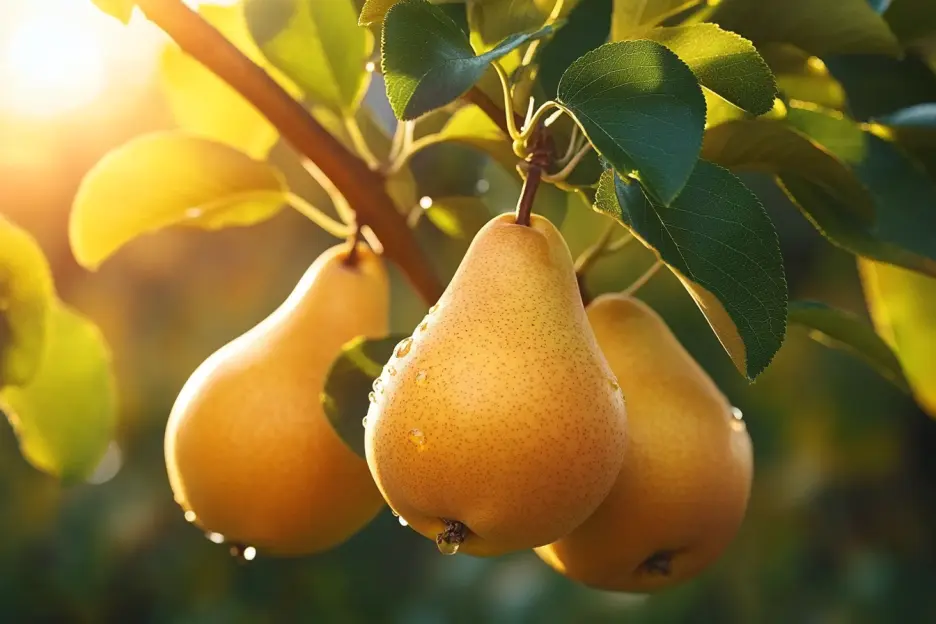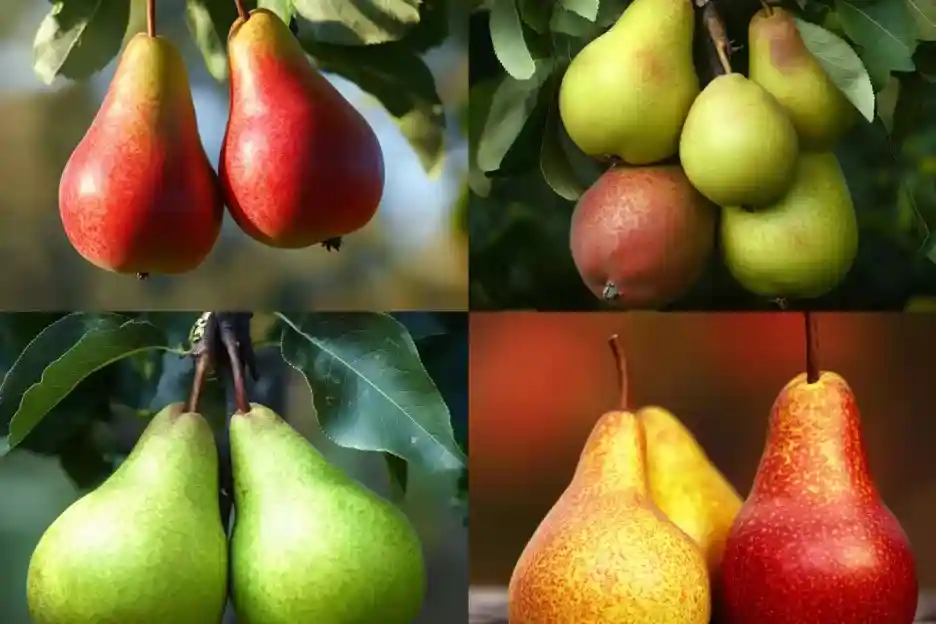Growing pears at home is a rewarding experience, providing delicious, fresh fruit right from your backyard. This guide will walk you through everything you need to know, from selecting the right variety to caring for your pear trees through the seasons.

1. Quick Facts About Growing Pears
Before diving into the details, it’s important to know some key benefits and growing conditions for pear trees.
Key Facts:
- Benefits: Pears are rich in fiber and vitamin C, making them a healthy addition to your home garden.
- Growing Conditions: Pear trees thrive in full sun and prefer well-drained, loamy soil with a pH of 6.0-7.0.
2. Getting Started: Choosing the Right Pear Tree Variety
Selecting the right pear variety for your garden depends on your climate and space availability. Some varieties are better suited for colder climates, while others thrive in milder regions.
Recommended Varieties:
- Bartlett Pears: Best for warm climates and one of the most popular varieties.
- Anjou Pears: Ideal for northern gardens due to their hardiness.
- Asian Pears: Known for their crisp texture and early fruiting.
Pro Tip: Choose self-pollinating varieties if you have limited space or only plan to plant one tree.

3. How to Plant Pear Trees in Your Garden
Planting pear trees requires proper spacing, soil preparation, and attention to detail. Here’s a step-by-step guide to help you plant your pear tree successfully.
Step-by-Step Planting Guide:
- Spacing: Plant trees 12-20 feet apart to allow room for growth.
- Depth: Dig a hole twice as wide as the root ball and deep enough to cover the roots without burying the trunk.
- Container or Wall Planting: If space is limited, you can plant pear trees in containers or train them along a wall.
Learn more about container planting for fruit trees here.
4. Caring for Your Pear Trees Through the Seasons
To keep your pear trees healthy, regular care throughout the year is essential. From watering in the summer to protecting them in the winter, here’s how to ensure your pear trees thrive year-round.
Seasonal Care Tips:
- Watering: Keep the soil evenly moist but not waterlogged. Pear trees need consistent watering during dry periods.
- Mulching: Apply mulch around the base of the tree to retain moisture and regulate soil temperature.
- Fertilizing: Use a balanced fertilizer in early spring to promote growth. Avoid over-fertilizing, as it can reduce fruit production.
5. Pruning Pear Trees for Maximum Yield
Pruning is crucial for maintaining the health of your pear tree and maximizing fruit production. Proper pruning encourages airflow, sunlight penetration, and overall tree structure.
Pruning Guide:
- Initial Pruning: Prune the tree in the first year to establish shape.
- Regular Pruning: After the first year, prune annually in late winter to remove dead or damaged branches and promote fruiting.
- Renovating Old Trees: For older, neglected trees, a more aggressive pruning strategy may be needed to rejuvenate fruit production.
6. Harvesting and Storing Pears
Knowing when and how to harvest your pears ensures you get the best flavor from your fruit. Proper storage also helps keep them fresh for weeks or even months.
Harvesting Tips:
- Ripeness: Pears are ready to pick when they easily detach from the branch with a slight twist.
- Storing Pears: Store pears in a cool, dark place or refrigerate them for longer shelf life.
7. Protecting Pear Trees During Winter
Pear trees can be vulnerable to frost and cold weather, especially in northern climates. Taking the right precautions can protect your tree and ensure it comes back strong in the spring.
Winter Protection Techniques:
- Mulching: Apply a thick layer of mulch around the tree’s base to insulate the roots.
- Frost Covers: Use frost covers or burlap to shield young trees from extreme cold.
- Watering: Water the tree deeply before the first frost to help it retain moisture during winter.
8. Common Pests, Diseases, and Challenges
Pear trees can face several challenges, including pests and diseases like fire blight. Here’s how to prevent and manage these issues organically.
Common Pests and Diseases:
- Fire Blight: A bacterial disease that can damage pear trees. Prune affected areas and disinfect tools to prevent spreading.
- Aphids: Use neem oil or insecticidal soap to control aphids and other common pests.
- Animal Damage: Protect young trees from animals like deer and rabbits by using fencing or netting.
External Resource: For additional pest control tips, check out this guide on growing pears.
Frequently Asked Questions
Q: Do pear trees need another tree for pollination?
A: Most pear trees are not self-pollinating, so you’ll need at least two different varieties for cross-pollination, unless you choose a self-pollinating variety.
Q: How long does it take for pear trees to bear fruit?
A: Pear trees typically start producing fruit within 3-5 years after planting, depending on the variety and growing conditions.
Q: What causes pear fruit to drop before ripening?
A: Premature fruit drop can be caused by over-fertilizing, improper watering, or lack of pollination.
Conclusion
Growing pears at home can be a fulfilling and fruitful endeavor with the right care and attention. By selecting the appropriate variety, planting in the right location, and following seasonal care and pruning techniques, you’ll be rewarded with a bountiful pear harvest for years to come.


1 thought on “Everything You Need to Know About Growing Pears at Home”